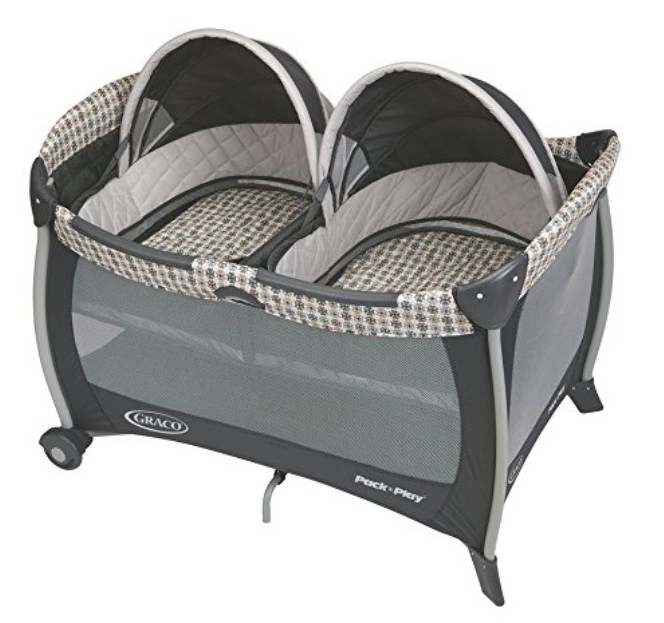This step-by-step guide on using a travel system with a newborn is here to help new parents feel confident about their early outings. We know that caring for your tiny bundle of joy comes with its challenges, which is why this guide focuses on making safety and ease a priority. From securely attaching the car seat to the stroller to tips for keeping your baby cozy and all the essential safety checks, we’ve got you covered. Follow these simple instructions, and you’ll be ready to get out and about, making memories with your little one while keeping their well-being front and center.
3-in-1 Premium Baby Stroller and Car Seat Travel System
Choose the Right Travel System
Select a travel system that seamlessly integrates with your lifestyle and vehicle. Assess your daily routines and determine how often you’ll be using the system, whether for quick trips or longer excursions. Measure your vehicle’s trunk space and ensure the travel system fits comfortably. Investigate the compatibility of the car seat with the stroller, making sure they connect effortlessly for convenience on the go.
Review safety standards for newborns to guarantee the car seat offers secure protection. Familiarize yourself with essential features like weight limits to ensure longevity as your baby grows. Evaluate ease of use: can you easily attach and detach the car seat? Look for systems that offer ample storage capacity for diaper bags, toys, and personal items, making every outing as stress-free as possible. Research customer reviews and product specifications to gather insights from other parents and align your choice with your family’s needs.
Install the Car Seat Properly
Read the manufacturer’s instructions thoroughly before beginning the installation. Each car seat and vehicle may have specific requirements, so it’s essential to understand the guidelines provided. Choose whether to use the seat belt or the LATCH system for installation; both methods can be effective when done correctly.
- Position the car seat in the back seat of your vehicle, preferably in the middle for maximum safety.
- If using the seat belt, thread the belt through the designated path in the car seat, ensuring it clicks into the buckle and is locked.
- If using the LATCH system, locate the lower anchors in your vehicle and attach the car seat clips securely.
- Push down firmly on the car seat while pulling the strap to tighten it.
- Check for movement by grasping the base of the car seat; it should not move more than one inch in any direction.
Make necessary adjustments if the seat isn’t secure, as a tightly fastened car seat significantly improves your child’s safety while traveling.
Prepare the Car Seat for Your Newborn
Adjust the harness straps to fit your newborn snugly. First, position your newborn in the car seat, ensuring they are sitting comfortably. Locate the harness straps and slide them into place, ensuring that they are at or below your baby’s shoulders. This position keeps your little one safe and secure. Tighten the straps by pulling on the adjuster until they fit snugly against your baby’s body. Remember, you should only be able to fit one finger between the harness and your baby’s chest. If you can fit more than that, adjust the straps tighter.
Use any newborn inserts provided with the car seat for added comfort and support. These inserts help cradle your baby and ensure a proper fit in the seat. Place the insert in the designated area of the car seat, making sure it’s securely positioned. Once the insert is in place, recheck the harness straps to ensure they still lie at or below your newborn’s shoulders. With these careful adjustments, you’ll create a safe and cozy environment for your newborn during every car ride.
Transitioning from Car to Stroller
Remove the car seat from the vehicle by unbuckling it from the seatbelt or LATCH system. Hold the car seat securely with one hand while using the other to press the release button, often located at the back or side of the seat. Carefully lift the car seat out and carry it to the stroller.
Align the car seat with the stroller’s attachment points. Look for the designated connectors on the stroller—these may be labeled or highlighted for easy identification. Lower the car seat onto the stroller, ensuring that the base of the car seat fits snugly into the connectors. Listen for a click sound as the car seat locks into place. Gently tug on the seat to ensure it is securely attached and cannot be easily dislodged. If the car seat features additional safety mechanisms, engage them for extra security.
Secure Your Newborn in the Stroller
Ensure that the car seat is properly attached to the stroller before placing your newborn inside. Once the car seat is secured, carefully lower your baby into the seat.
- Adjust the harness system so that it fits snugly around your newborn.
- Check that the straps are not twisted or tangled.
- Slide your fingers between the straps and your baby; they should fit snugly but still allow for slight movement.
- Fasten the buckles and ensure that they click securely into place.
- Inspect the harness for any loose ends or slack, and tighten it as needed.
- Keep your baby’s comfort in mind by adjusting the padding around the straps if applicable.
- Regularly check the harness during your stroll to maintain safety and comfort.
Practice Safety Tips
Stay vigilant and always keep an eye on your newborn while using the travel system. This means maintaining a constant watch over your little one, whether they are in the stroller or car seat. For instance, if you are at the grocery store, position yourself so you can see your baby while you shop. Ensure that your hands are free of distractions, as you want to be alert to any signs of discomfort or need from your child. Avoid distractions like your phone; it’s crucial to prioritize your attention on your baby, as even a momentary lapse can lead to potential dangers.
Familiarize yourself with local laws regarding child safety seats and stroller use. Research what regulations apply in your area about car seat usage, as they can vary significantly. For example, some regions mandate that infants remain in rear-facing seats until they reach a certain weight or age. Understand the specific guidelines to ensure your baby’s safety and compliance with the law. Similarly, learn about rules regarding stroller use in public spaces. Some parks or public transport might have particular guidelines for stroller safety, like designated areas where you can and cannot go with your stroller. Knowing these details provides peace of mind and ensures a safe experience for both you and your newborn.
Final Tips for Safe Travels
In conclusion, using a travel system with your newborn can make outings much more manageable and enjoyable. By prioritizing your baby’s safety and comfort, and regularly checking for necessary adjustments, you’ll ensure a smooth journey whether you’re running errands or heading out for family adventures. Embrace the freedom that comes with a reliable travel system, and enjoy exploring the world together with your little one!











